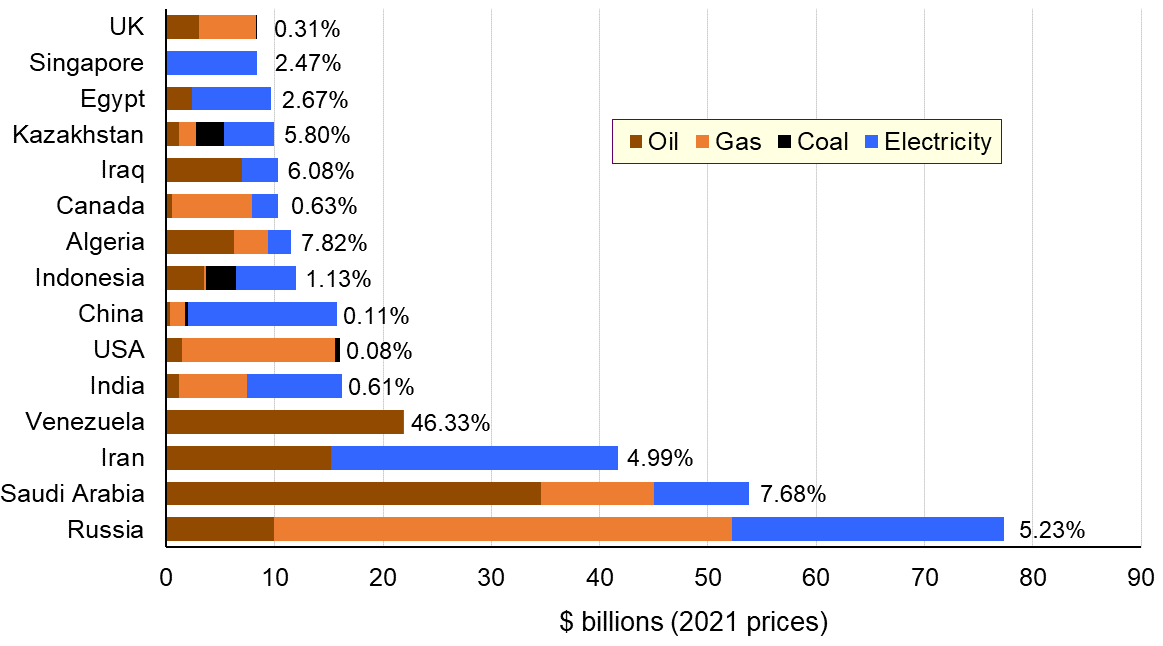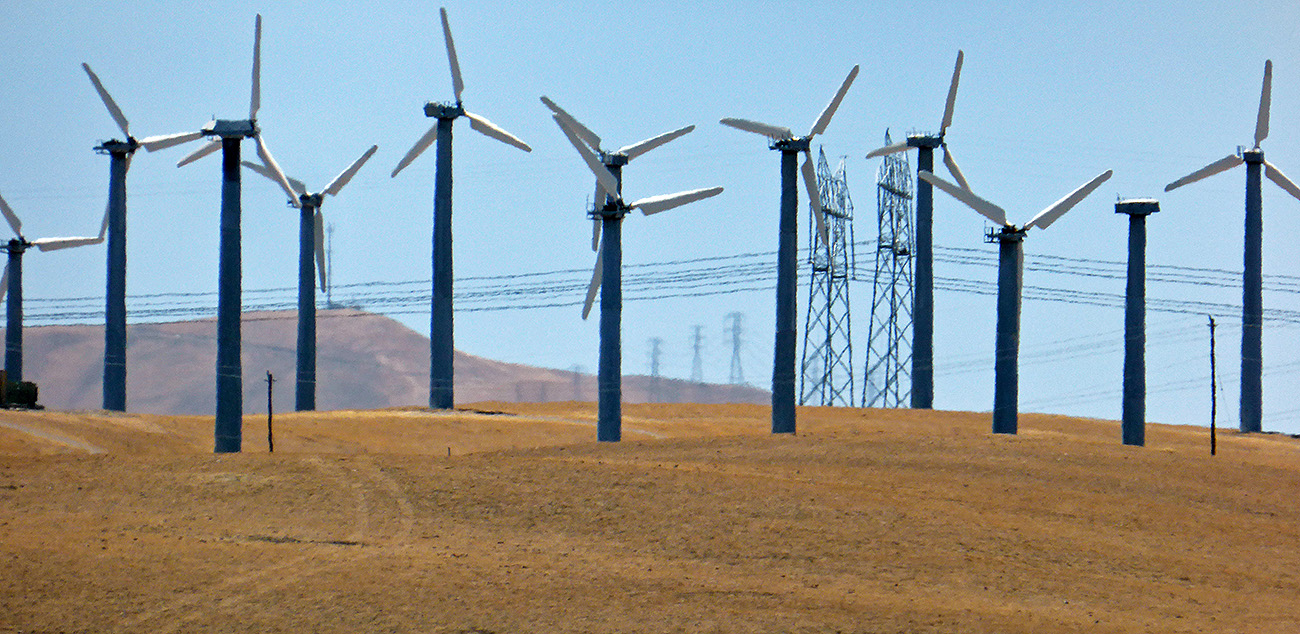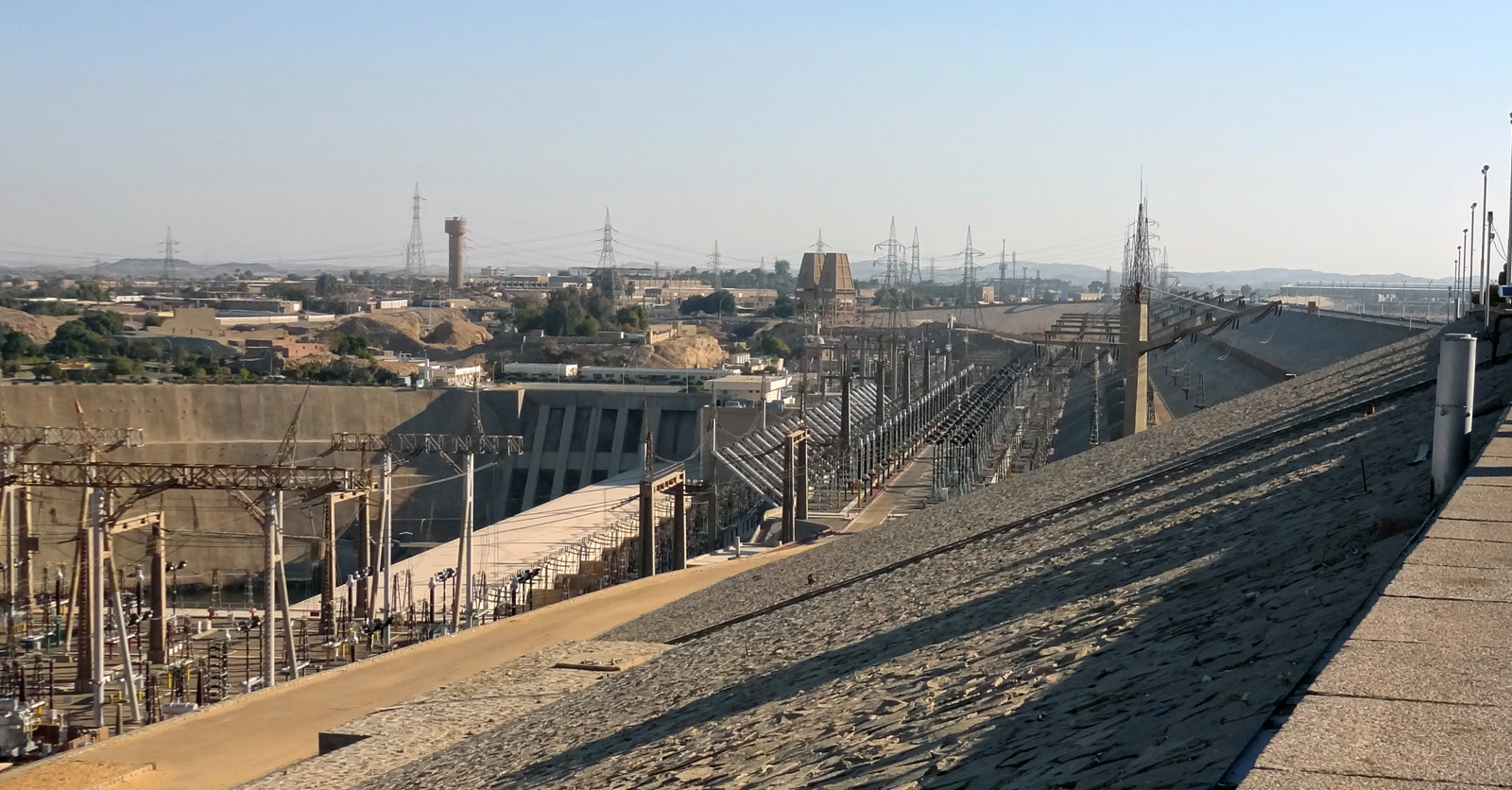
The Climate Change Pact agreed by leaders at the end of COP26 in Glasgow went further than many pessimists had forecast, but not far enough to meet the goal of keeping global warming to 1.5°C above pre-industrial levels. The Pact states that:
limiting global warming to 1.5°C requires rapid, deep and sustained reductions in global greenhouse gas emissions, including reducing global carbon dioxide emissions by 45 per cent by 2030 relative to the 2010 level and to net zero around mid-century, as well as deep reductions in other greenhouse gases.
So how far would the commitments made in Glasgow restrict global warming and what actions need to be put in place to meet these commitments?
Short-term commitments and long-term goals
According to Climate Action Tracker, the short-term commitments to action that countries set out would cause global warming of 2.4°C by the end of the century, the effects of which would be calamitous in terms of rising sea levels and extreme weather.
However, long-term commitments to goals, as opposed to specific actions, if turned into specific actions to meet the goals would restrict warming to around 1.8°C by the end of the century. These long-term goals include reaching net zero emissions by certain dates. For the majority of the 136 countries agreeing to reach net zero, the date they set was 2050, but for some developing countries, it was later. China, Brazil, Indonesia, Russia, Nigeria, Sri Lanka and Saudi Arabia, for example, set a date of 2060 and India of 2070. Some countries set an earlier target and others, such as Benin, Bhutan, Cambodia, Guyana, Liberia and Madagascar, claimed they had already reached zero net emissions.
Despite these target dates, Climate Action Tracker argues that only 6 per cent of countries pledging net zero have robust policies in place to meet the targets. The problem is that actions are required by firms and individuals. They must cut their direct emissions and reduce the consumption of products whose production involved emissions.
 Governments can incentivise individuals and firms through emissions and product taxes, through carbon pricing, through cap-and-trade schemes, through subsidies on green investment, production and consumption, through legal limits on emissions, through trying to change behaviour by education campaigns, and so on. In each case, the extent to which individuals and firms will respond is hard to predict. People may want to reduce global warming and yet be reluctant to change their own behaviour, seeing themselves as too insignificant to make any difference and blaming big business, governments or rich individuals. It is important, therefore, for governments to get incentive mechanisms right to achieve the stated targets.
Governments can incentivise individuals and firms through emissions and product taxes, through carbon pricing, through cap-and-trade schemes, through subsidies on green investment, production and consumption, through legal limits on emissions, through trying to change behaviour by education campaigns, and so on. In each case, the extent to which individuals and firms will respond is hard to predict. People may want to reduce global warming and yet be reluctant to change their own behaviour, seeing themselves as too insignificant to make any difference and blaming big business, governments or rich individuals. It is important, therefore, for governments to get incentive mechanisms right to achieve the stated targets.
Let us turn to some specific targets specified in the Climate Change Pact.
Phasing out fossil fuel subsidies
Paragraph 20 of the Climate Change Pact
Calls upon Parties to accelerate … efforts towards the … phase-out of inefficient fossil fuel subsidies, while providing targeted support to the poorest and most vulnerable in line with national circumstances and recognizing the need for support towards a just transition.
Production subsidies include tax breaks or direct payments that reduce the cost of producing coal, oil or gas. Consumption subsidies cut fuel prices for the end user, such as by fixing the price at the petrol pump below the market rate. They are often justified as a way of making energy cheaper for poorer people. In fact, they provide a bigger benefit to wealthier people, who are larger users of energy. A more efficient way of helping the poor would be through benefits or general tax relief. Removing consumption subsidies in 32 countries alone would, according to International Institute for Sustainable Development, cut greenhouse gas emission by an average of 6 per cent by 2025.
 The chart shows the 15 countries providing the largest amount of support to fossil fuel industries in 2020 (in 2021 prices). The bars are in billions of dollars and the percentage of GDP is also given for each country. Subsidies include both production and consumption subsidies. (Click here for a PowerPoint of the chart.) In addition to the direct subsidies shown in the chart, there are the indirect costs of subsidies, including pollution, environmental destruction and the impact on the climate. According to the IMF, these amounted to $5.4 trillion in 2020.
The chart shows the 15 countries providing the largest amount of support to fossil fuel industries in 2020 (in 2021 prices). The bars are in billions of dollars and the percentage of GDP is also given for each country. Subsidies include both production and consumption subsidies. (Click here for a PowerPoint of the chart.) In addition to the direct subsidies shown in the chart, there are the indirect costs of subsidies, including pollution, environmental destruction and the impact on the climate. According to the IMF, these amounted to $5.4 trillion in 2020.
But getting countries to agree on a path to cutting subsidies, when conditions vary enormously from one country to another, proved very difficult.
 The first draft of the conference agreement called for countries to ‘to accelerate the phasing-out of coal and subsidies for fossil fuels’. But, after objections from major coal producing countries, such as China, India and Australia, this was weakened to calling on countries to accelerate the shift to clean energy systems ‘by scaling up the deployment of clean power generation and energy efficiency measures, including accelerating efforts towards the phasedown of unabated coal power and phase-out of inefficient fossil fuel subsidies’. (‘Unabated’ coal power refers to power generation with no carbon capture.) Changing ‘phasing-out’ to ‘the phasedown’ caused consternation among many delegates who saw this as a substantial weakening of the drive to end the use of coal.
The first draft of the conference agreement called for countries to ‘to accelerate the phasing-out of coal and subsidies for fossil fuels’. But, after objections from major coal producing countries, such as China, India and Australia, this was weakened to calling on countries to accelerate the shift to clean energy systems ‘by scaling up the deployment of clean power generation and energy efficiency measures, including accelerating efforts towards the phasedown of unabated coal power and phase-out of inefficient fossil fuel subsidies’. (‘Unabated’ coal power refers to power generation with no carbon capture.) Changing ‘phasing-out’ to ‘the phasedown’ caused consternation among many delegates who saw this as a substantial weakening of the drive to end the use of coal.
Another problem is in defining ‘inefficient’ subsidies. Countries are likely to define them in a way that suits them.
The key question was the extent to which countries would actually adopt such measures and what the details would be. Would they be strong enough? This remained to be seen.
As an article in the journal, Nature, points out:
There are three main barriers to removing production subsidies … First, fossil-fuel companies are powerful political groups. Second, there are legitimate concerns about job losses in communities that have few alternative employment options. And third, people often worry that rising energy prices might depress economic growth or trigger inflation.
The other question with the phasing out of subsidies is how and how much would there be ‘targeted support to the poorest and most vulnerable in line with national circumstances’.
Financial support for developing countries
 Transitioning to a low-carbon economy and investing in measures to protect people from rising sea levels, floods, droughts, fires, etc. costs money. With many developing countries facing serious financial problems, especially in the light of measures to support their economies and healthcare systems to mitigate the effects of COVID-19, support is needed from the developed world.
Transitioning to a low-carbon economy and investing in measures to protect people from rising sea levels, floods, droughts, fires, etc. costs money. With many developing countries facing serious financial problems, especially in the light of measures to support their economies and healthcare systems to mitigate the effects of COVID-19, support is needed from the developed world.
In the COP21 Paris Agreement in 2015, developed countries pledged $100 billion by 2020 to support mitigation of and adaptation to the effects of climate change by developing countries. But the target was not reached. The COP26 Pact urged ‘developed country Parties to fully deliver on the $100 billion goal urgently and through to 2025’. It also emphasised the importance of transparency in the implementation of their pledges. The proposal was also discussed to set up a trillion dollar per year fund from 2025, but no agreement was reached.
It remains to be seen just how much support will be given.
Then there was the question of compensating developing countries for the loss and damage which has already resulted from climate change. Large historical polluters, such as the USA, the UK and various EU countries, were unwilling to agree to a compensation mechanism, fearing that any recognition of culpability could make them open to lawsuits and demands for financial compensation.
Other decisions
- More than 100 countries at the meeting agreed to cut global methane emissions by at least 30 per cent from 2020 levels by 2030. Methane is a more powerful but shorter-living greenhouse gas than carbon. It is responsible for about a third of all human-generated global warming. China, India and Russia, however, did not sign up.
 Again, more than 100 countries agreed to stop deforestation by 2030. These countries include Indonesia and Brazil, which has been heavily criticised for allowing large parts of the Amazon rainforest to be cleared for farming, such that the Amazon region in recent years has been a net emitter of carbon from the felling and burning of trees. The pledge has been met with considerable cynicism, however, as it unclear how it will be policed. Much of the deforestation around the world is already illegal but goes ahead anyway.
Again, more than 100 countries agreed to stop deforestation by 2030. These countries include Indonesia and Brazil, which has been heavily criticised for allowing large parts of the Amazon rainforest to be cleared for farming, such that the Amazon region in recent years has been a net emitter of carbon from the felling and burning of trees. The pledge has been met with considerable cynicism, however, as it unclear how it will be policed. Much of the deforestation around the world is already illegal but goes ahead anyway.- A mechanism for trading carbon credits was agreed. This allows countries which plant forests or build wind farms to earn credits. However, it may simply provide a mechanism for rich countries and businesses to keep emitting as usual by buying credits.
- Forty-five countries pledged to invest in green agricultural practices to make farming more sustainable.
- Twenty-two countries signed a declaration to create zero-emission maritime shipping routes.
- The USA and China signed a joint declaration promising to boost co-operation over the next decade on various climate actions, including reducing methane emissions, tackling deforestation and regulating decarbonisation.
 Blah, blah, blah or real action?
Blah, blah, blah or real action?
Many of the decisions merely represent targets. What is essential is for countries clearly to spell out the mechanisms they will use for achieving them. So far there is too little detail. It was agreed, therefore, to reconvene in a year’s time at COP27 in Egypt. Countries will be expected to spell out in detail what actions they are taking to meet their emissions targets and other targets such as ending deforestation and reducing coal-fired generation.
Articles
- COP26 ended with the Glasgow Climate Pact. Here’s where it succeeded and failed
- Good COP, Bad COP: Separating heat from light at the climate summit
- COP26: What was agreed at the Glasgow climate conference?
- Five Things You Need to Know About The New Glasgow Climate Pact
- Infographic: What has your country pledged at COP26?
- Cop26: world on track for disastrous heating of more than 2.4C, says key report
- Cop26 took us one step closer to combating the climate crisis
- After the failure of Cop26, there’s only one last hope for our survival
- Why fossil fuel subsidies are so hard to kill
- The COP26 blah blah blah detector
CNN, Angela Dewan and Amy Cassidy (14/11/21)
Ing, Samuel Abettan, Gerben Hieminga and Coco Zhang (15/11/21)
BBC News (15/11/21)
The Conversation, Simon Lewis and Mark Maslin (13/11/21)
Aljazeera, Hanna Duggal (14/11/21)
The Guardian, Fiona Harvey (9/11/21)
The Guardian, Christiana Figueres (15/11/21)
The Guardian, George Monbiot (14/11/21)
Nature, Jocelyn Timperley (20/10/21)
Rappler, Elpidio Peria (16/11/21)
Podcasts
 What’s in the COP26 deal – and will it save humanity?
What’s in the COP26 deal – and will it save humanity? Cop26: where does the world go from here?
Cop26: where does the world go from here?
Channel 4 News, Simon Roach (15/11/21)
The Guardian Today in Focus Podcast, Fiona Harvey and Michael Safi (15/11/21)
Videos
 What is net zero?
What is net zero? Ros Atkins On: The Challenge of Net Zero
Ros Atkins On: The Challenge of Net Zero What is carbon trading?
What is carbon trading?
The Economist (30/7/21)
BBC News, Ros Atkins (8/10/21)
CNBC International, Tom Chitty
Report
- Warming Projections Global Update
Climate Action Tracker (November 2021)
Document
- Glasgow Climate Pact (Advance unedited version)
United Nations Framework Convention on Climate Change (14/11/21)
Questions
- What were the main achievements of COP26?
- What were the main failings of COP26?
- How can people be incentivised to reduce their direct and indirect greenhouse gas emissions?
- How is game theory relevant to understanding the difficulties in achieving global net zero emissions?
- Should developing countries be required to give up coal power?
- If the world is to achieve net zero greenhouse gas emissions, should all countries achieve net zero or should some countries achieve net negative emissions to allow others to continue with net positive emissions (albeit at a lower level)?
 We rely on the natural environment as a source of food and raw materials, for recreation and health and as a dump for waste. Yet, too often, little or no monetary value is placed on the environment. GDP, the standard measure of economic success, is based on market values; and the market undervalues the environment. The prices of the goods we buy bear little relationship with the environmental costs of their production. And yet we all bear the costs (some more than others) as the planet warms, as rain forests are cut down, as seas become polluted and as biodiversity is destroyed.
We rely on the natural environment as a source of food and raw materials, for recreation and health and as a dump for waste. Yet, too often, little or no monetary value is placed on the environment. GDP, the standard measure of economic success, is based on market values; and the market undervalues the environment. The prices of the goods we buy bear little relationship with the environmental costs of their production. And yet we all bear the costs (some more than others) as the planet warms, as rain forests are cut down, as seas become polluted and as biodiversity is destroyed. Moreover, aspects of Nature are mobile; some are invisible, such as in the soils; and many are silent. These features mean that the effects of many of our actions on ourselves and others – including our descendants – are hard to trace and go unaccounted for, giving rise to widespread ‘externalities’ and making it hard for markets to function well.
Moreover, aspects of Nature are mobile; some are invisible, such as in the soils; and many are silent. These features mean that the effects of many of our actions on ourselves and others – including our descendants – are hard to trace and go unaccounted for, giving rise to widespread ‘externalities’ and making it hard for markets to function well. Change our measures of economic success to guide us on a more sustainable path. This would involve amending measures, such as GDP, to include environmental degradation (-ve) and improvement (+ve) and national wealth to include all natural assets, such as biodiversity and land, air, sea and water quality. This would involve ‘natural capital accounting’. This, in turn, would be helped by global standardised presentation of data and modelling approaches, and the provision of data on the environment by statistical agencies.
Change our measures of economic success to guide us on a more sustainable path. This would involve amending measures, such as GDP, to include environmental degradation (-ve) and improvement (+ve) and national wealth to include all natural assets, such as biodiversity and land, air, sea and water quality. This would involve ‘natural capital accounting’. This, in turn, would be helped by global standardised presentation of data and modelling approaches, and the provision of data on the environment by statistical agencies. As Sir David Attenborough states in his foreword to the Review,
As Sir David Attenborough states in his foreword to the Review,  Each week, BBC Radio 4 broadcasts readings from a book serialised in five 15-minute episodes. In the week beginning 18 January 2021,
Each week, BBC Radio 4 broadcasts readings from a book serialised in five 15-minute episodes. In the week beginning 18 January 2021,